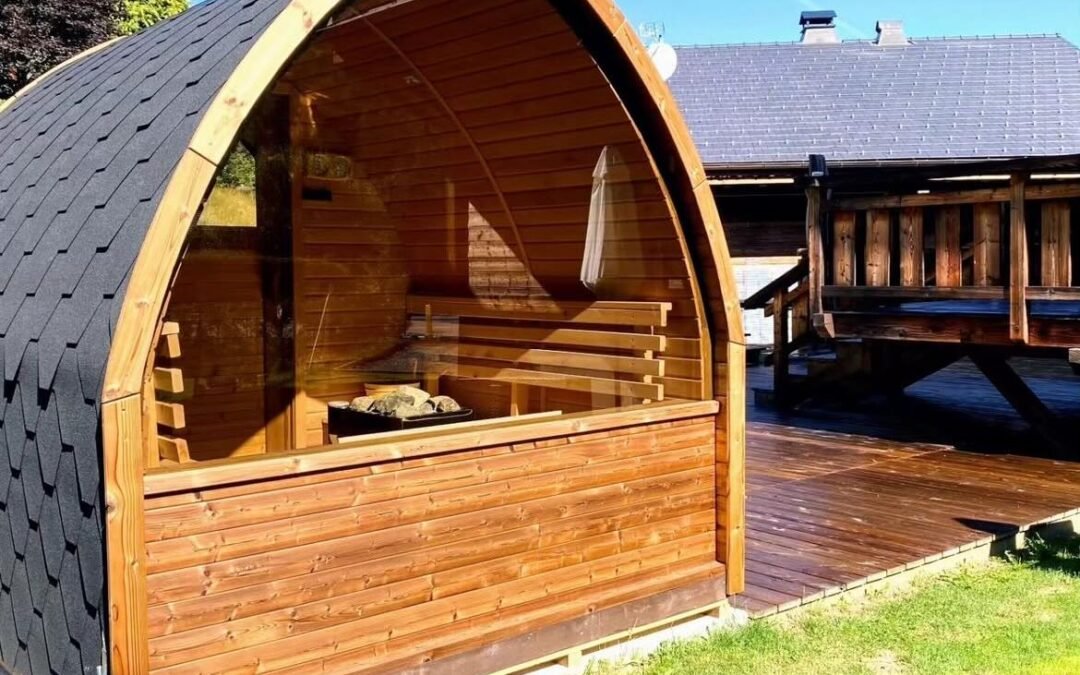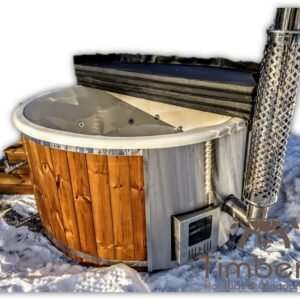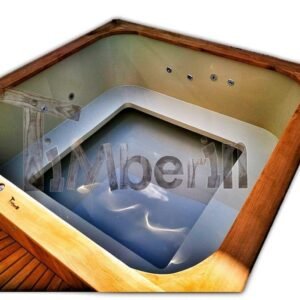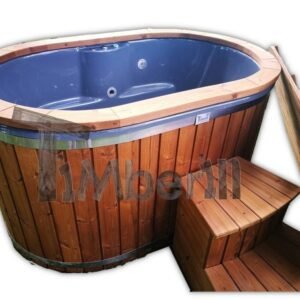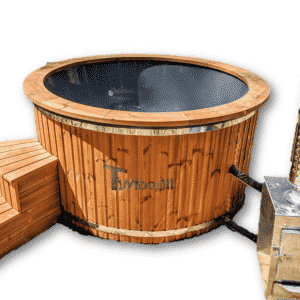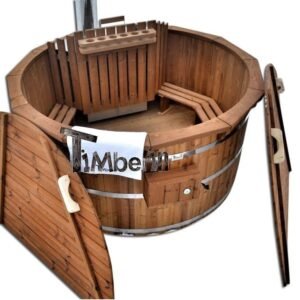Outdoor saunas provide a luxurious retreat for relaxation and wellness, but have you ever wondered how they’re powered? In this article, we’ll explore the various methods used to power outdoor saunas, from traditional wood-burning to modern electric and infrared systems.
Best Selling Models
-
20% OFF!
Log Burner Hot Tub with Jets – TimberIN Rojal
From: €4,427From: €3,689 -
Spacious!
Square rectangular hot tub
From: €2,229 -
For 2 persons!
2 Person Hot Tub Wood Fired
From: €1,710 -
External burner
Wood heated Hot Tub
From: €2,199 -
Wooden thermo
Barrel Wooden Hot Tub Deluxe thermowood
From: €2,743 -
Square model
Hot Tub Square 2.2×2.2 m
€4,108
Wood-Burning Saunas
Traditionalists often appreciate the charm of wood-burning saunas. In this system, a wood stove is placed inside the sauna, and the heat is generated by burning wood logs. This method not only imparts a rustic ambiance but also creates a timeless sauna experience. It’s important to follow proper safety guidelines and ventilation recommendations when using wood-burning saunas.
Electrically Heated Saunas
Electrically heated saunas are a popular choice for their convenience and ease of use. These saunas are powered by electricity, usually requiring a dedicated electrical connection. Electric heaters, equipped with controls to regulate temperature, are the primary heat source. This method allows for precise temperature control and is suitable for various sauna sizes.
Infrared Saunas
Infrared saunas use infrared heaters to emit radiant heat that is absorbed directly by the body. They are typically powered by electricity, and the heaters can be composed of ceramic, carbon, or other materials. Infrared saunas are known for their energy efficiency and ability to provide a gentle, penetrating heat that warms the body without excessively heating the sauna environment.
Gas-Powered Saunas
While less common, some outdoor saunas are powered by gas. Gas heaters, often propane or natural gas, provide a quick and efficient way to heat the sauna. Gas-powered saunas may be a suitable option for those without access to electricity or those seeking an alternative heating method.
Solar-Powered Saunas
For eco-conscious sauna enthusiasts, solar-powered saunas harness energy from the sun. Solar panels collect sunlight and convert it into electricity to power the sauna. While this method aligns with sustainability goals, it may require a larger initial investment for the installation of solar panels.
Hybrid Systems
Hybrid sauna systems combine different power sources for optimal efficiency. For example, a sauna might use electricity for the primary heating source but have a wood-burning stove for those who enjoy the traditional sauna experience. Hybrid systems provide flexibility and the option to choose the most suitable power source for specific situations.
Generator-Powered Saunas
In remote locations or areas with unreliable power sources, generator-powered saunas offer a solution. A generator, often fueled by gasoline or diesel, provides the necessary electricity to heat the sauna. While effective, this method comes with additional considerations such as fuel availability and noise.
Conclusion
The power source for your outdoor sauna ultimately depends on your preferences, available resources, and the desired sauna experience. Whether you opt for the crackling warmth of a wood-burning sauna, the convenience of electric heating, or the energy efficiency of solar power, each method contributes to creating a blissful retreat for relaxation and well-being in your own backyard.

